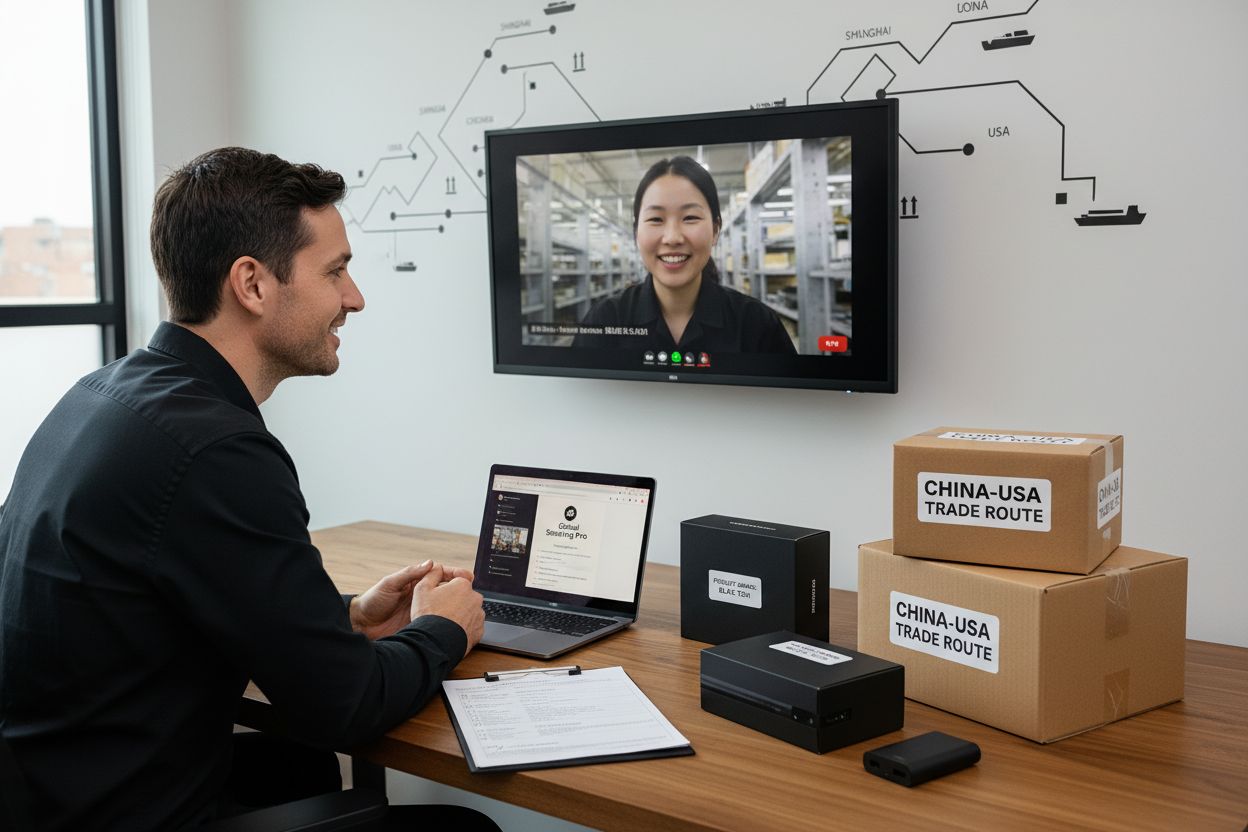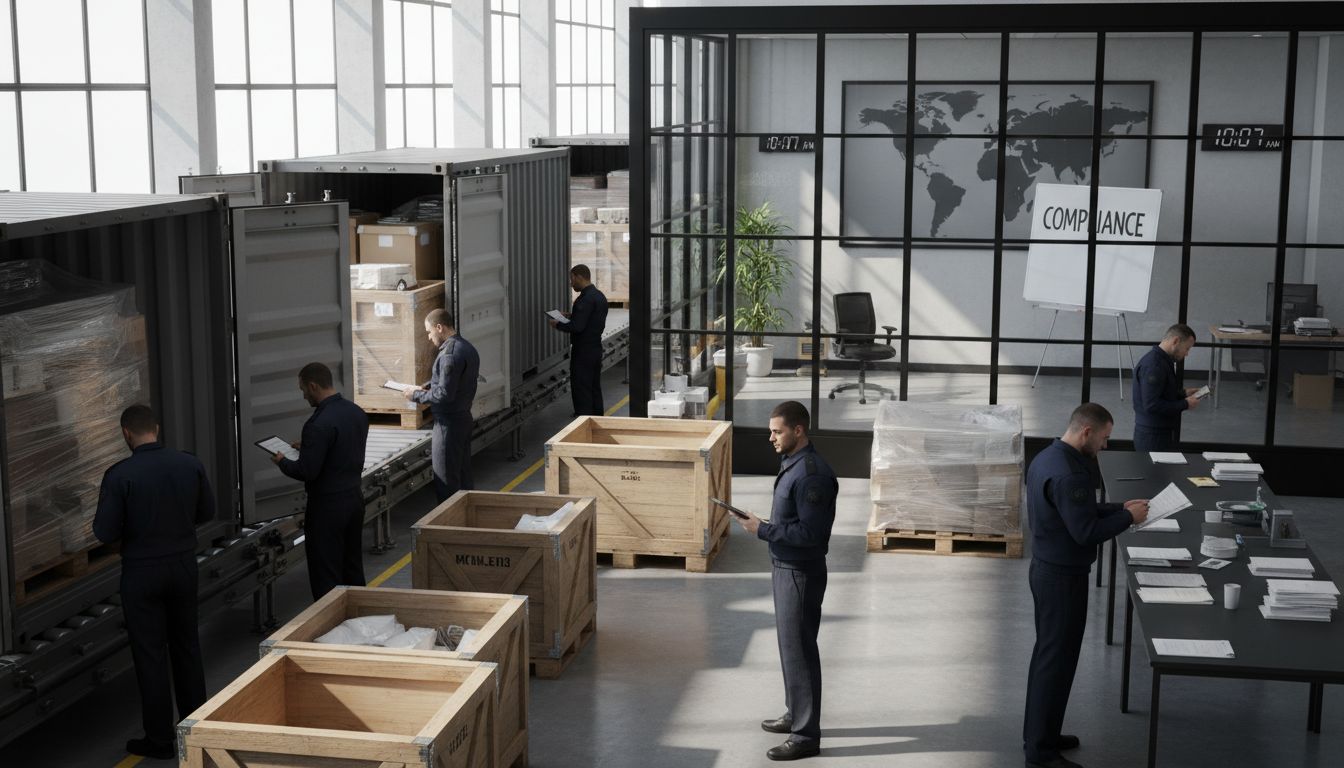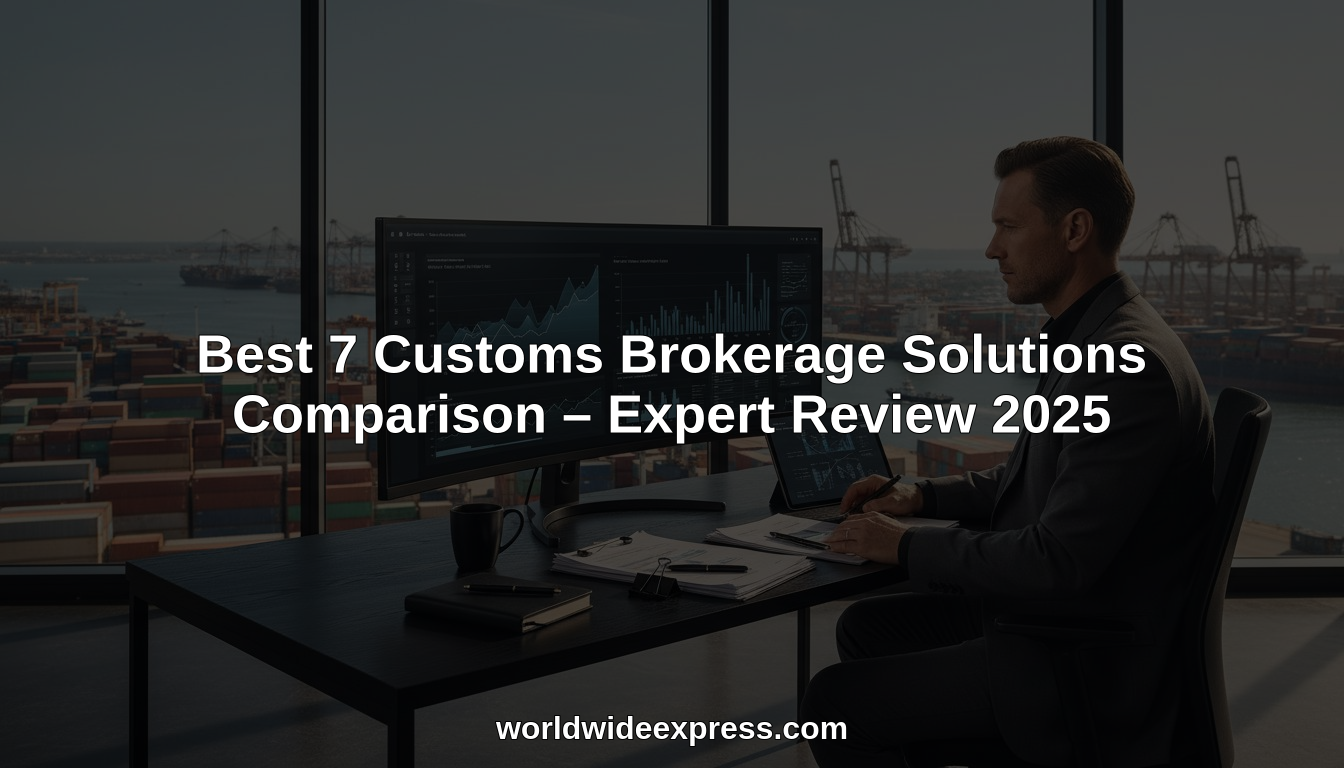Nearly $563 billion worth of goods moved from China to the United States last year, making this trade route one of the busiest in the world. For businesses looking to import products, the process can feel overwhelming and full of hidden obstacles. Navigating supplier research, negotiating deals, managing shipping, and ensuring compliance all require careful planning. Clear steps can help you source quality goods and avoid costly mistakes every step of the way.
Quick Summary
| Key Point | Explanation |
|---|---|
| 1. Define your sourcing requirements clearly | Understand your exact product specifications, quality standards, and volume needs before searching for suppliers. |
| 2. Verify suppliers thoroughly | Check business licenses, export credentials, and ask for references to ensure reliability and capability. |
| 3. Negotiate clearly and document everything | Discuss terms like Incoterms and get agreements in writing to protect your business interests. |
| 4. Prepare comprehensive shipping documentation | Ensure all necessary documents for customs compliance are complete to avoid delays or penalties. |
| 5. Conduct thorough inspection upon delivery | Inspect shipped goods for quality and compliance, documenting any discrepancies immediately for resolution. |
Table of Contents
- Step 1: Assess Sourcing Needs And Research Suppliers
- Step 2: Negotiate Terms And Verify Supplier Credentials
- Step 3: Arrange Shipping And Choose Logistics Solutions
- Step 4: Ensure Customs Compliance And Prepare Documentation
- Step 5: Track Shipments And Confirm Delivery Quality
Step 1: Assess sourcing needs and research suppliers
Before you jump into importing from China, you need a solid game plan for finding the right suppliers who can deliver exactly what your business needs. This step is about understanding your product requirements and connecting with reliable manufacturers who can make your import dreams a reality.
Start by getting crystal clear on what you want to source. What specific product are you looking to import? What are its precise specifications, quality standards, and volume requirements? According to research from Alfa Jars Shipping, US importers have multiple pathways to discover potential suppliers. Online platforms like Alibaba are fantastic starting points where you can browse thousands of manufacturers. Trade shows in China also offer incredible opportunities to meet suppliers face to face and evaluate their capabilities directly.
Pro Tip: Don’t put all your eggs in one basket. Always research multiple suppliers to compare pricing, quality, and production capacity.
When researching suppliers, you want to go beyond surface level interactions. Verify their business licenses and export credentials. Ask for product samples. Request references from other international clients. According to Artemus Group, it’s crucial to confirm product compliance needs early this includes understanding regulations from agencies like the Consumer Product Safety Commission (CPSC) or Food and Drug Administration (FDA).
Be prepared to ask tough questions about their manufacturing process. How large is their production capacity? What quality control systems do they have? How responsive are they in communication? Watch for red flags like suppliers demanding excessive upfront deposits or offering prices that seem too good to be true.
Use free resources like trade directories, online marketplaces, and industry networks to expand your supplier search. Consider working with a sourcing agent who knows the Chinese market if you want expert guidance. They can help navigate language barriers and local business practices.
Here’s a comparison of key supplier research methods:
| Method | Advantages | Limitations |
|---|---|---|
| Online Platforms | Broad supplier access Easy initial screening |
May lack direct product evaluation Potential for unverified info |
| Trade Shows | Face-to-face meetings Direct product assessment |
Requires travel Limited show dates |
| Industry Networks | Trusted referrals Relevant experience sharing |
Smaller pool May miss new suppliers |
| Sourcing Agents | Expert guidance Language & culture support |
Service fees Varying agent reliability |
By the end of this step, you should have a shortlist of 3-5 potential suppliers who meet your product specifications and quality standards. Next, you will move into detailed communication and negotiation to find your perfect manufacturing partner.
Step 2: Negotiate terms and verify supplier credentials
Now that you have a shortlist of potential suppliers, it is time to dive into negotiations and ensure you are partnering with a legitimate and reliable manufacturing partner. This step is all about protecting your business interests while establishing clear expectations and terms.
Start by thoroughly verifying each supplier’s credentials. According to Alfa Jars Shipping, this means checking their business and export licenses, inspecting quality management systems like ISO certifications, and evaluating their actual production capacity. Do not just take their word for it obtain official documentation and independently confirm their capabilities.
Pro Tip: Request multiple references from international clients and actually contact those references to validate the supplier’s reputation and performance history.
When it comes to negotiations, clarity is your best friend. According to Artemus Group, interpreting Incoterms 2020 correctly is critical for allocating costs and responsibilities accurately. Understand exactly who is responsible for shipping, insurance, customs clearance, and potential additional fees. Get everything in writing and make sure you comprehend each term before signing.
Request product samples early in the process and be prepared to pay for them. These samples are not just about verifying product quality they help you confirm that the supplier fully understands your specifications. Check every detail closely padding thickness, material quality, color consistency and do not hesitate to request modifications.
Watch for potential red flags during negotiations. Be cautious of suppliers demanding excessive upfront deposits or offering prices that seem unrealistically low. Responsive and transparent communication is key if a supplier is evasive or difficult to reach during negotiations, that is often a warning sign.
Ensure you discuss and document compliance requirements thoroughly. Since you are importing to the United States, your supplier must understand and meet regulations from bodies like the Consumer Product Safety Commission (CPSC), Food and Drug Administration (FDA), or Federal Communications Commission (FCC) depending on your product.
By the end of this step, you should have a detailed agreement with a verified supplier who meets your quality standards and understands your specific requirements. Your next move is to finalize the contract and prepare for the production and shipping process.
Step 3: Arrange shipping and choose logistics solutions
With your supplier locked in, it is time to navigate the complex world of international shipping. Your goal here is to select the most efficient and cost effective transportation method that aligns with your product needs and business timeline.
According to Artemus Group, US importers have multiple shipping options depending on your specific requirements. Ocean freight remains the most economical choice for bulk shipments though be prepared for potential port congestion delays. If speed is your priority, air freight offers significantly faster delivery times while courier services work best for smaller consignments.
Pro Tip: Consider a freight forwarder who can simplify the entire shipping process by coordinating export clearance, carrier bookings, and customs documentation.
Research from Wansea China highlights several shipping timelines you should understand. Sea freight typically takes 20 to 40 days with options like Less than Container Load (LCL) or Full Container Load (FCL). Air freight dramatically reduces transit time to 3 to 7 days for cargo shipments. Multimodal options like rail air transport can offer a balanced approach with transit times around 15 to 25 days.
Your shipping strategy should also consider major export ports in China like Shanghai, Shenzhen, and Ningbo. For US entry, key ports include Los Angeles, Long Beach, New York, New Jersey, Savannah, and Houston. Each port has unique characteristics that might impact your shipping efficiency.
Ensure you have all necessary shipping documents prepared. This includes a bill of lading, commercial invoice, packing list, Importer Security Filing (ISF), certificate of origin, and customs bond. Learn more about logistics solutions to streamline your documentation process.
Be prepared to make strategic decisions about container types, shipping insurance, and potential customs complications. Working with an experienced freight forwarder can help you navigate these complexities and avoid unexpected challenges.
By the end of this step, you should have a clear shipping plan with defined transportation method, estimated timeline, and all required documentation in order. Your next move is to track your shipment and prepare for customs clearance.
Step 4: Ensure customs compliance and prepare documentation
With your shipment ready, you are now entering one of the most critical stages of importing from China accurate customs documentation and compliance. This step determines whether your goods smoothly enter the United States or get stuck in bureaucratic limbo.
According to Artemus Group, every shipment from China now requires a formal customs entry. You will need an Employer Identification Number (EIN) and must calculate duties using the Harmonized Tariff Schedule (HTS). The game has changed post de minimis rule adjustments duties now apply to virtually all shipments.
Pro Tip: File your Importer Security Filing (ISF) at least 24 hours before your vessel departs to avoid potential penalties.
Research from RCP Brcko highlights the mountain of documentation you will need. Prepare these critical documents meticulously: commercial invoice, packing list, bill of lading, certificate of origin, import license (if applicable), customs entry form, power of attorney, and certificate of analysis.
Learn more about preparing your importer security filing to streamline your customs process. Accuracy is not just recommended it is mandatory. One misplaced number or incorrect description can trigger delays, additional inspections, or financial penalties.
You will submit most of these documents through the Automated Commercial Environment (ACE) portal. This electronic system requires precise data entry and complete transparency about your shipment contents, value, and classification.
Pay special attention to your HTS codes they determine your exact duty rates. A slight misclassification can result in overpaying or underpaying duties both of which can cause significant problems. Consider consulting a customs broker if you are unsure about proper classification.
By the end of this step, you should have a comprehensive documentation package that meets all US Customs requirements. Your next move is to track your shipment and prepare for final customs clearance and delivery.
Step 5: Track shipments and confirm delivery quality
Your shipment is on its way and now begins the critical phase of tracking and ensuring your goods arrive safely and meet your quality expectations. This step requires patience, attention to detail, and strategic monitoring.
According to research from Well Trans Logistics, shipping times can vary significantly. Expect approximately 14 days for West Coast arrivals and up to 30 days for East Coast destinations. These timelines are not set in stone and can fluctuate based on multiple factors.
Pro Tip: Always have a contingency plan for potential shipping delays and maintain open communication with your supplier.
A recent academic study from arXiv reveals a critical insight shipment delays have increased by an average of 21 days between 2018 and 2024. This underscores the importance of tracking your global shipments carefully and building flexibility into your supply chain strategy.
Upon arrival, you will receive a notification from the shipping carrier. This is your signal to prepare entry documentation and work with your customs broker to clear the goods. Once cleared, conduct a thorough inspection immediately. Check the shipment for several key factors physical condition, quantity, quality, and compliance with your original specifications.
During inspection, document everything meticulously. Take clear photographs, measure dimensions, test product functionality, and compare the received items against your initial order requirements. If you discover any discrepancies or damages, you will need to notify your supplier promptly and potentially negotiate compensation or replacement.
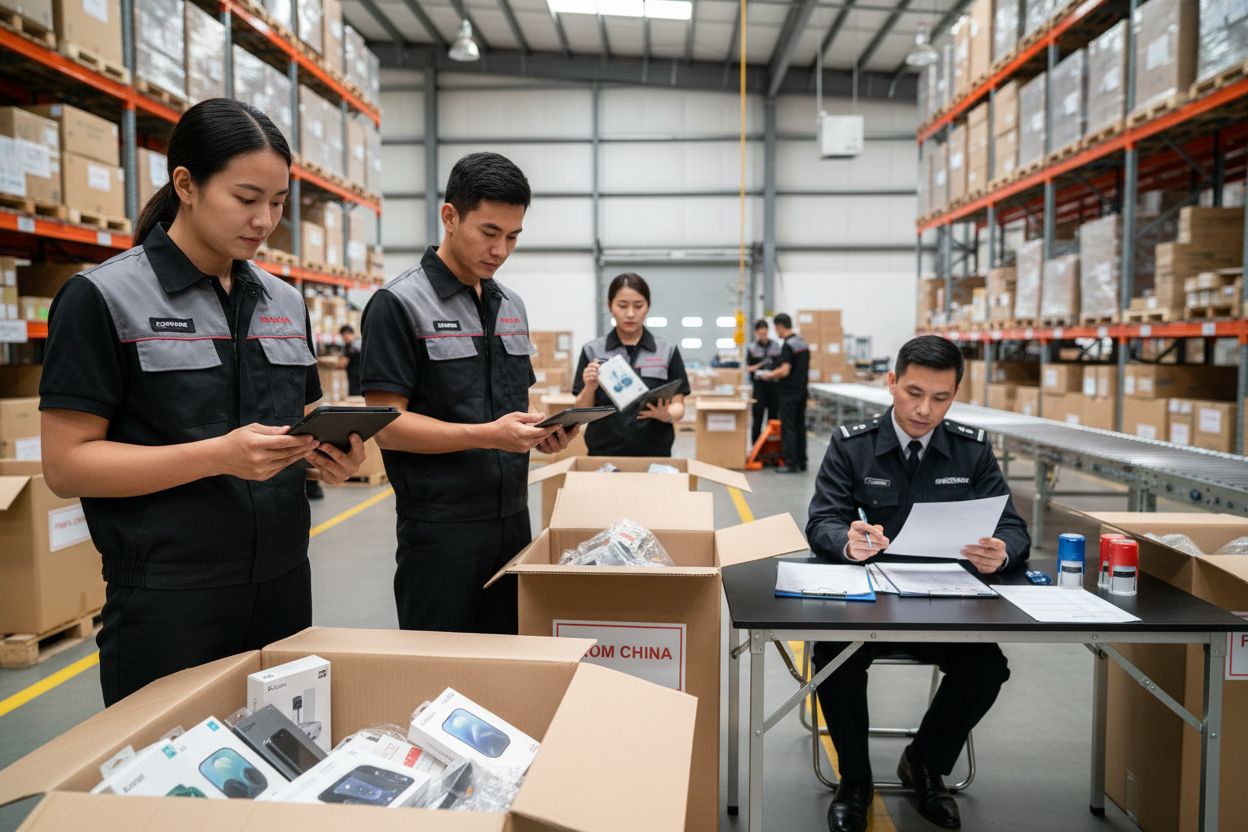
Remember that your relationship with the supplier does not end with this shipment. Use this experience to evaluate their reliability and determine whether you want to continue working together in the future. Detailed feedback and clear communication can help improve future orders and prevent potential issues.
By the end of this step, you should have a comprehensive understanding of your shipment’s condition and be prepared to either accept the goods or initiate a resolution process with your supplier. Your next move is to integrate these products into your business operations and plan for future import strategies.
Make Importing from China Effortless with Worldwide Express
Are you feeling overwhelmed by the maze of complex shipping, customs compliance, and supplier verification that comes with importing from China? This step-by-step guide laid out the key challenges importers face: verifying suppliers, navigating Incoterms, ensuring complete documentation, and tracking shipments every step of the way. If your business needs a fast, stress-free way to handle customs clearance, air and ocean freight, and ongoing shipment monitoring, Worldwide Express, Inc. is here to turn hassle into opportunity. Explore more about importing and logistics challenges in our Uncategorized section for extra industry insights.
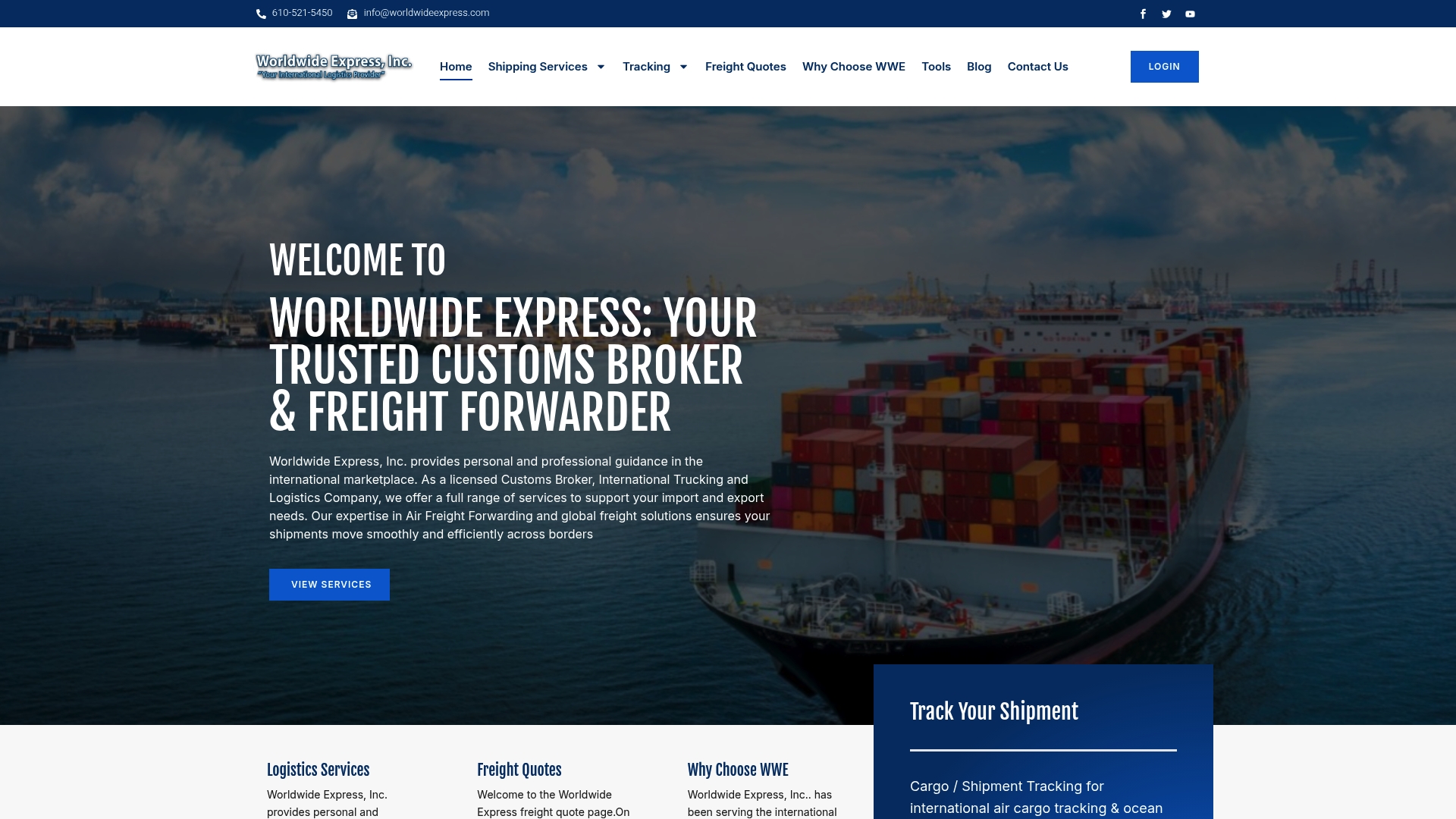
Now is the time to leverage specialized industry experience and tailored solutions designed for seamless international shipping and compliance. Let experts manage your end-to-end supply chain, track your global orders, and keep your cargo protected every mile of the journey. Start simplifying your next China import project with Worldwide Express, Inc. today for a strategic advantage in your global business.
Frequently Asked Questions
How do I find reliable suppliers when importing from China?
To find reliable suppliers, start by clarifying your product specifications and quality standards. Utilize online platforms and trade shows to compile a list of potential manufacturers, then verify their business licenses and certifications.
What should I negotiate with my supplier before finalizing a deal?
Before finalizing a deal, negotiate terms such as pricing, payment schedules, production timelines, and shipping responsibilities. Ensure these terms are clearly documented to avoid misunderstandings down the line.
What documentation do I need for customs compliance when importing?
You will need several critical documents for customs compliance, including the commercial invoice, bill of lading, and Importer Security Filing (ISF). Prepare these documents accurately to prevent delays and ensure smooth entry into the market.
How can I track my shipment effectively once it’s on its way?
To track your shipment effectively, maintain communication with your shipping carrier and use their tracking system regularly. Set reminders to check in on the shipment’s status to manage any potential delays proactively.
What steps should I take if my shipment arrives with damages or discrepancies?
If your shipment arrives with damages or discrepancies, inspect the contents immediately and document any issues with photographs. Report these problems to your supplier as soon as possible to negotiate compensation or replacements effectively.
How do I evaluate whether a supplier is meeting my quality standards after delivery?
After delivery, evaluate supplier quality by inspecting the physical condition and functionality of the products compared to your original specifications. Create a checklist of criteria to facilitate a thorough assessment and maintain clear communication with the supplier based on your findings.

